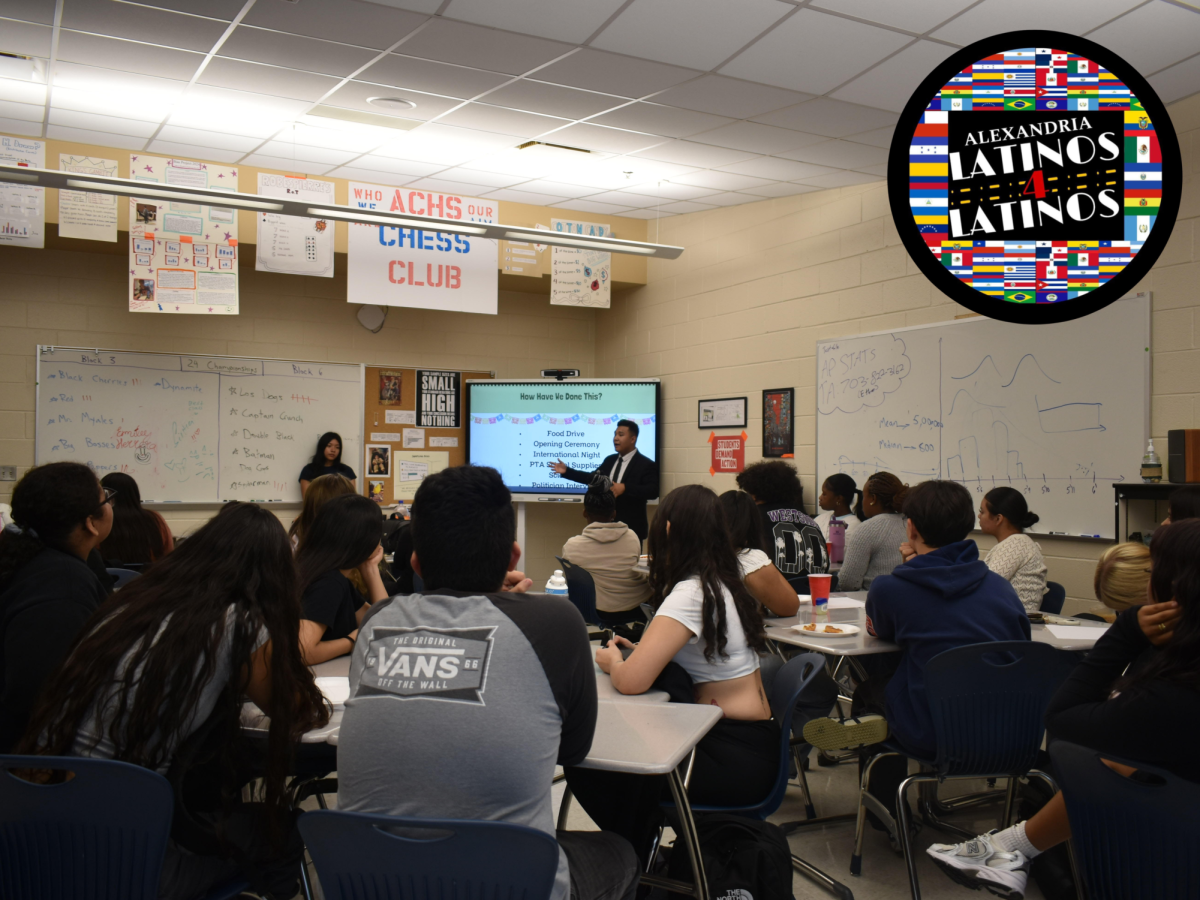The Department of Education and the Presidential Election
Wearing a dark jacket, white shirt, and—the cherry on top—classic scarlet “Make America Great Again” hat, all of which took on a certain glimmer through the bulletproof glass he lectured behind, Republican presidential nominee Donald J. Trump passionately recited his campaign message in front of thousands of his supporters at a rally on September 7, 2024 in Mosinee, WI.
A little more than 35 minutes into his speech, after attacking a plethora of organizations and programs including the Justice Department and national media, Trump turned his attention to education, proclaiming, “We will ultimately eliminate the Federal Department of Education and send education back to Wisconsin and back to the states.”
Trump’s proposal to shut down the Federal Department of Education (DOE) was not novel to his speech in Mosinee; it has been a central talking point throughout his campaign. According to the Washington Post, Trump talks about education the most when discussing the immediate changes he wishes to implement if elected president in November.
In outlining his reasoning for doing so, Trump was originally ambiguous in his Wisconsin rally in September, stating that he will “stop the abuse of your taxpayer dollars to indoctrinate America’s youth with all sorts of things that you don’t want to have our youth hearing.” Later in the same speech, however, he alluded to a more specific reasoning, saying that the attempt was to “keep critical race theory and transgender insanity the hell out of our schools.”
Vice President Kamala Harris has pushed back against Trump’s rhetoric to eliminate the DOE, saying that she is “not going to let him eliminate the Department of Education that funds our public schools,” according to the New York Times.
Brief History of the Department of Education
According to the DOE’s website, the Jimmy Carter administration established the DOE as a federal agency in 1980. In the decades preceding this federal establishment, the DOE worked under their mission umbrella of protecting civil rights; this funneled down primarily into making sure that poorer and underprivileged neighborhoods received adequate funding to provide a quality education environment, mostly through Title I, which amounted to $18.4 billion in fiscal year 2024.
Title I is a grant program provided by the DOE and was created to give students more access to educational resources in impoverished areas and communities. According to Fauquier County Public Schools, the DOE provides Title I funding to more than 90 percent of American school systems.
Why Do Some Want the DOE Eliminated?
While the DOE’s stated mission has always been to advance educational civil rights, the chronological dichotomy between the DOE’s responsibilities towards racial disparities versus social or gender rights is a talking point that has become essential to understanding the controversial push towards eliminating the DOE.
Vivek Ramaswamy, entrepreneur and former Republican presidential candidate, claimed in a recent interview that the “original purpose of [the DOE was] to make sure that, from a federal perspective, states were not systematically disadvantaging Black school districts over predominantly White ones.” While this is generally in accordance with the view of the DOE established above, Ramaswamy believes that this prerogative has fizzled out, and has no current foundation, stating that “it’s not a relevant purpose today.” This ushering out of the issue of racial educational disparity has made room, whether purposeful or not, for the rhetoric supporting the DOE’s shutdown to focus on what Republicans like Ramaswamy claim to be the overstepping of social and gender rights policies.
Trump exemplified this rhetoric as recently as last Monday on a Fox News Exclusive. “You know they take your kid. There are some places [where] your boy leaves the school, [and] comes back [as] a girl. What is that all about?” Trump said.
Andrew Orzel, an ACHS history and economics teacher, believes that the DOE’s contributions to underprivileged educational communities is still major and relevant, and that the DOE is a key contributor to these communities. “There’s still a racial component to it,” he said.
The ethics and true purposes of the DOE are a topic of great discussion during this election cycle. For now, however, the DOE still plays a large role in public education, and it is important to understand specifically what that role is for ACHS.
The Department of Education, ACHS, and the Budget Numbers in Detail
The ACPS Annual Comprehensive Financial Report for Fiscal Year 2023 (FY23) sums up ACPS’ finances for FY23, which ended on June 30, 2023. It is the most recent finance report available on ACPS’ website. In the report, ACPS breaks down its finances into different categories which they call “funds.” These funds hold more particulars about the sources of ACPS’ funds, as well as what was federal funding versus state and local funding.
Most notably, the report says that “87 cents of every dollar of ACPS’ total revenue” was distributed by state and local governments, with federal contributions totaling less than 13 percent.
The General Fund, defined by ACPS as the “general operating fund of the Board that is used to account for all financial resources, except those required to be accounted for in another fund,” held and spent more than 85 percent of ACPS’ total revenue in FY23. The bulk of the General Fund’s expenditures went into employee salaries and benefits. Other expenditures of the General Fund included general instruction (such as hiring more teachers), and pupil transportation, which has been a hot topic during this school year.
Shown above to be an incredibly significant part of the ACPS budget, the General Fund received the vast majority of its funding from state and local programs, rather than the federal government in FY23—in fact, the General Fund received only $147,000 from the federal government, less than 0.1 percent of the General Fund’s total revenue. The report did not indicate how much of the $147,000 was distributed by the DOE, as opposed to other federal departments. All this is to say that despite ACPS’ General Fund accounting for the large majority of its revenue and expenditures, it receives almost no funding from the federal government, including the DOE.
While crucial to ACPS’ standard operations, the General Fund is not the full picture. The report does outline about $13.2 million of its total revenue that was due to the DOE, indicating that approximately 3.58 percent of the total revenue of ACPS for FY23 came from the DOE.

These DOE funds are the summation of a set of 12 specific programs that are distributed by the DOE, in a larger list of 18 programs that ACPS lists as “due” to the federal government. One of these 12 DOE programs is the Title I funding program, mentioned above, which accounts for $2.35 million, according to the report. This Title I funding is distributed across five ACPS elementary schools, two K-8 schools, and one middle school (Francis C. Hammond), according to ACPS’ website—all of which funnel students into ACHS, which receives no Title I funding.
Impact on ACHS
According to the DOE’s website, around eight percent of school funding across the nation comes directly from the DOE—according to the ACPS FY23 financial report, however, as outlined above, less than four percent of ACPS funding comes from the DOE.
While this amount may be insignificant to ACHS, Mr. Orzel points out that the DOE’s eight percent average is just that—an average—meaning eliminating DOE funding, via a DOE shutdown, could have a greater impact in communities that rely on markedly more funding from the DOE than the eight percent average may indicate.
Additionally, the student population of ACPS is not stagnant; with every passing year, students move up the ACPS chain, beginning at elementary school, then moving on to middle school, and so on. If DOE funding, especially Title I money, were to be rescinded from the ACPS schools it benefits, the effects would eventually culminate in the ACHS population; assuming that the elimination of Title I funding from certain ACPS schools would have a direct impact on the quality of education at those schools, those students would potentially reflect lower academic success when entering ACHS.
The flow of students is not only limited within ACPS; many students graduating from ACHS and looking to attend higher education rely on federal student aid, a majority of which is provided by the DOE. According to Northern Virginia Community College (NVCC), 34 percent of its students received financial aid from 2021-2022. The DOE itself reports that it “awards more than $120 billion a year in grants, work-study funds, and low-interest loans to approximately 13 million students.” Eliminating the DOE and the student aid programs it funds would thus hurt ACHS students that need financial aid to attend a college or university.
In addition to Title I and student aid, the DOE also provides ACPS with funding for programs that include English Language Acquisition and Special Education, both of which, according to the financial report, are responsible for over $1.4 million in federal funding.
Where Do We Go From Here?
Ultimately, Mr. Orzel predicts that an elimination of the DOE “would largely go unnoticed” at ACHS specifically, citing the central role that local and state governments, especially the Virginia Department of Education (VDOE), play in funding. School lunches and meals would not be affected, according to Mr. Orzel, since they are provided with the support of the U.S. Department of Agriculture.
Trump and his team’s position on the DOE is clear—it has to go. Whether this is possible, however, is a different question. For this change to take place, the decision would first have to go through Congress—a prospect that Mr. Orzel thinks the “chances of happening are practically zero.” The proposition is more of a conservative rhetorical talking point, and isn’t exactly popular with the American public, according to Mr. Orzel.
On the topic of education, former President Trump and Vice President Harris are at loggerheads; Harris has repeatedly pushed back against Trump’s wishes to shut down the DOE, and it has become a central policy focus in an already razor-thin election race. A shutdown in practice seems to be extremely unlikely, and the potential effects on ACHS are unknown. However, with the election coming to a climactic close in the coming weeks, the future of education in America is something that no one can ignore.















